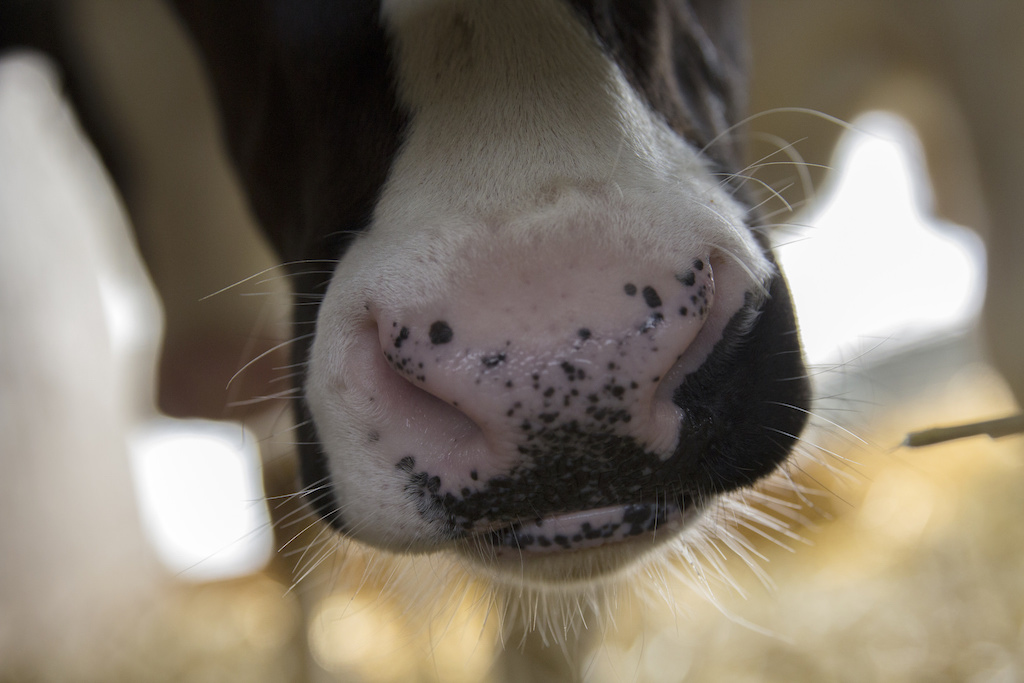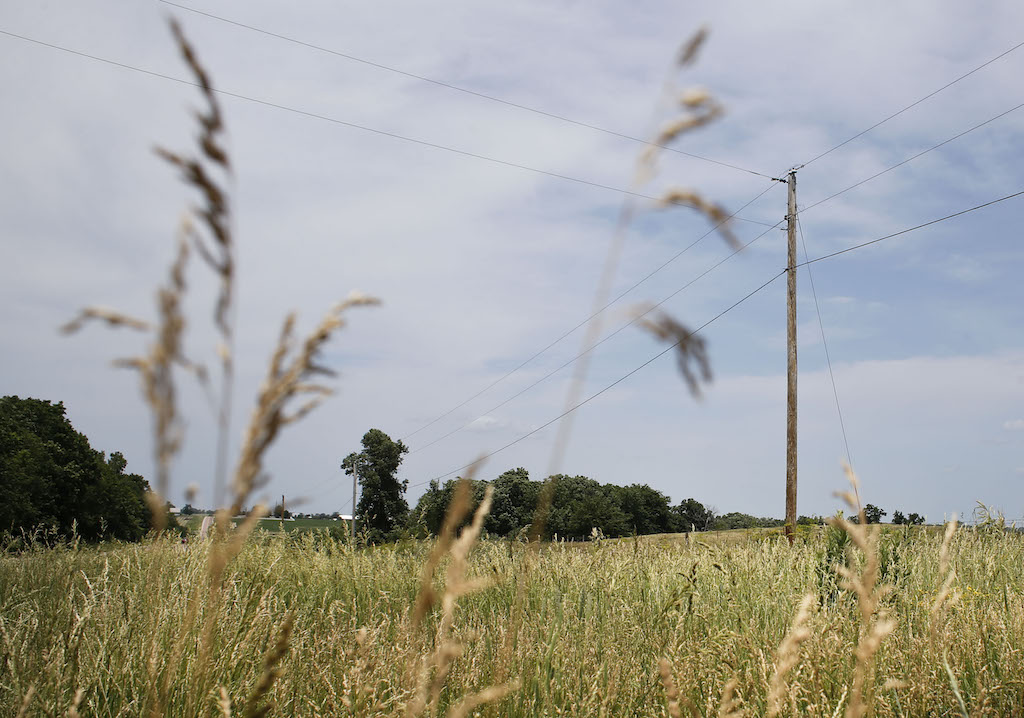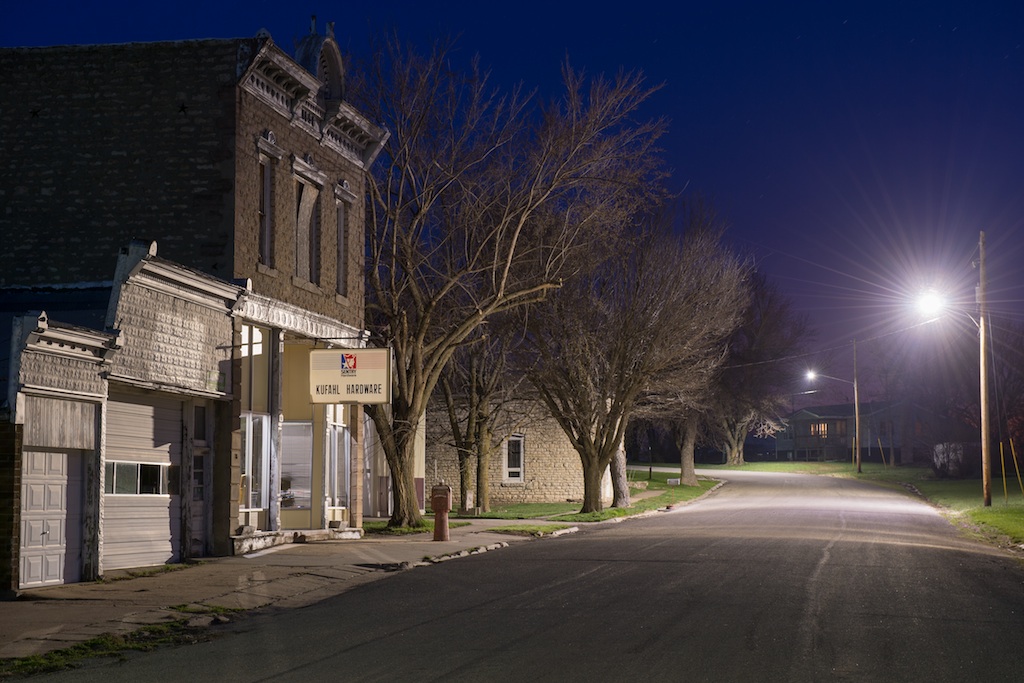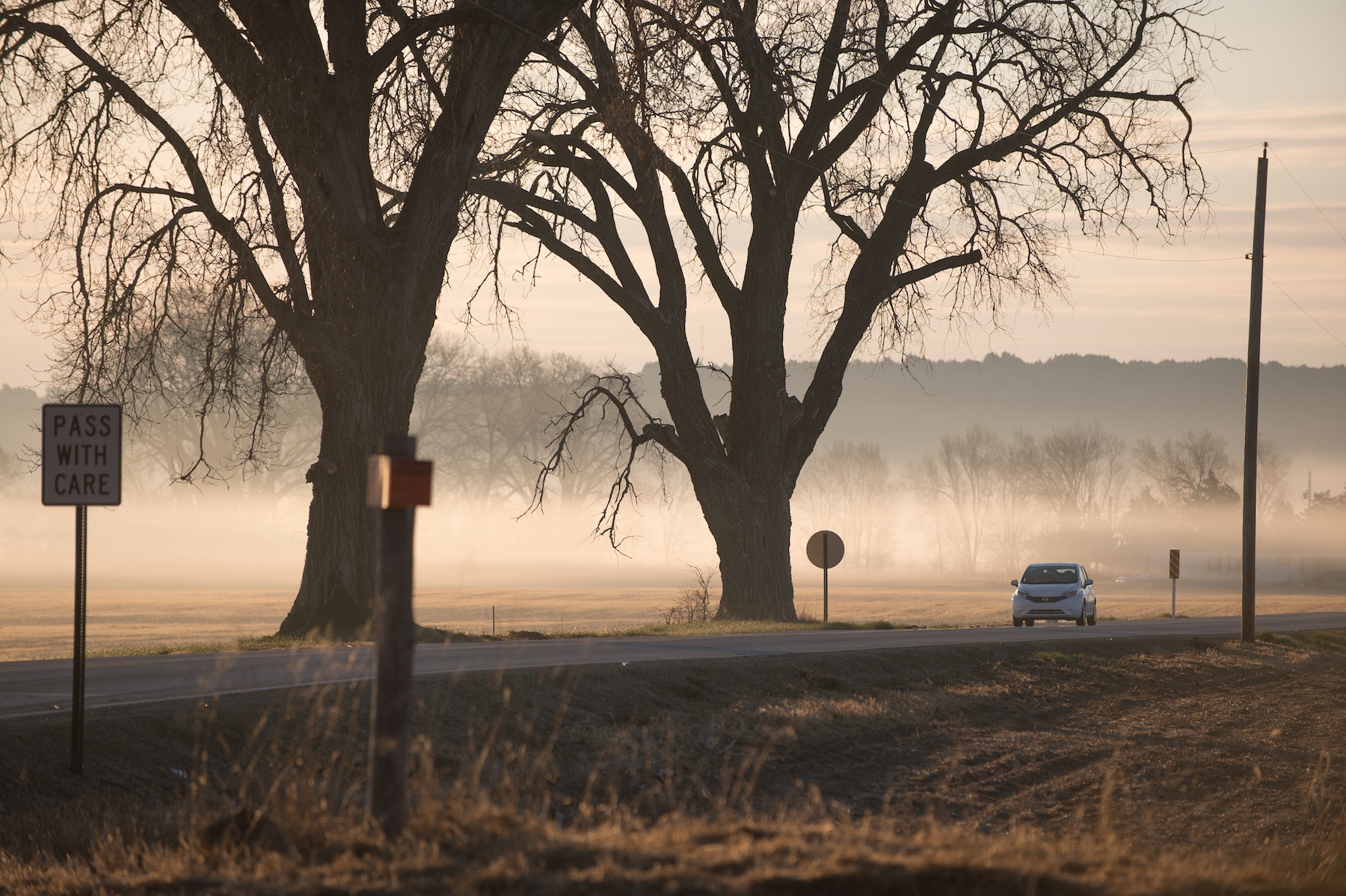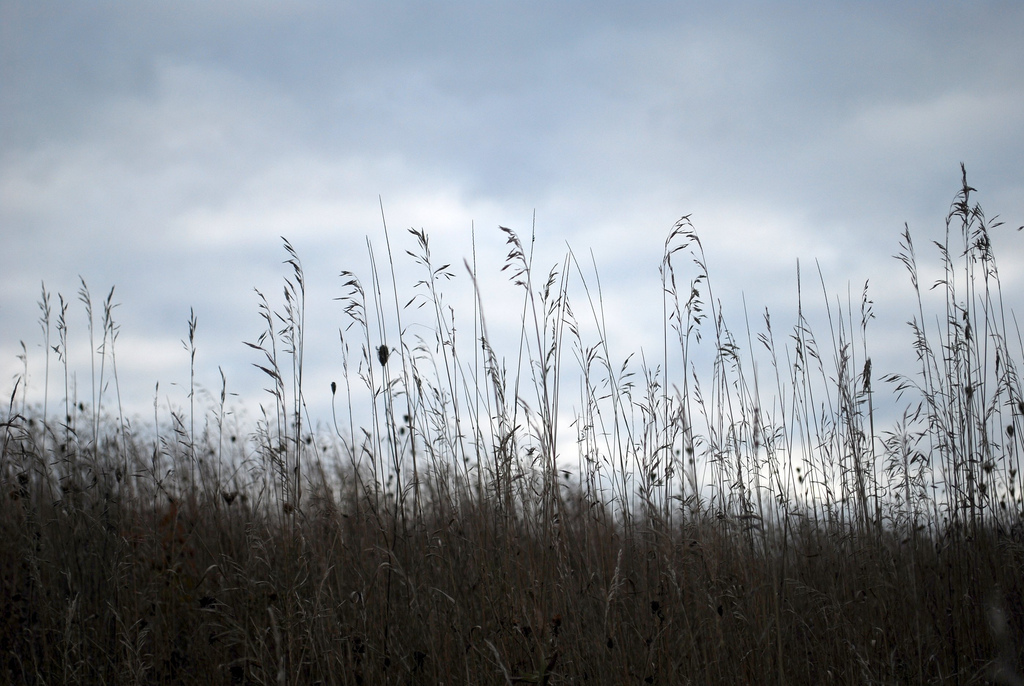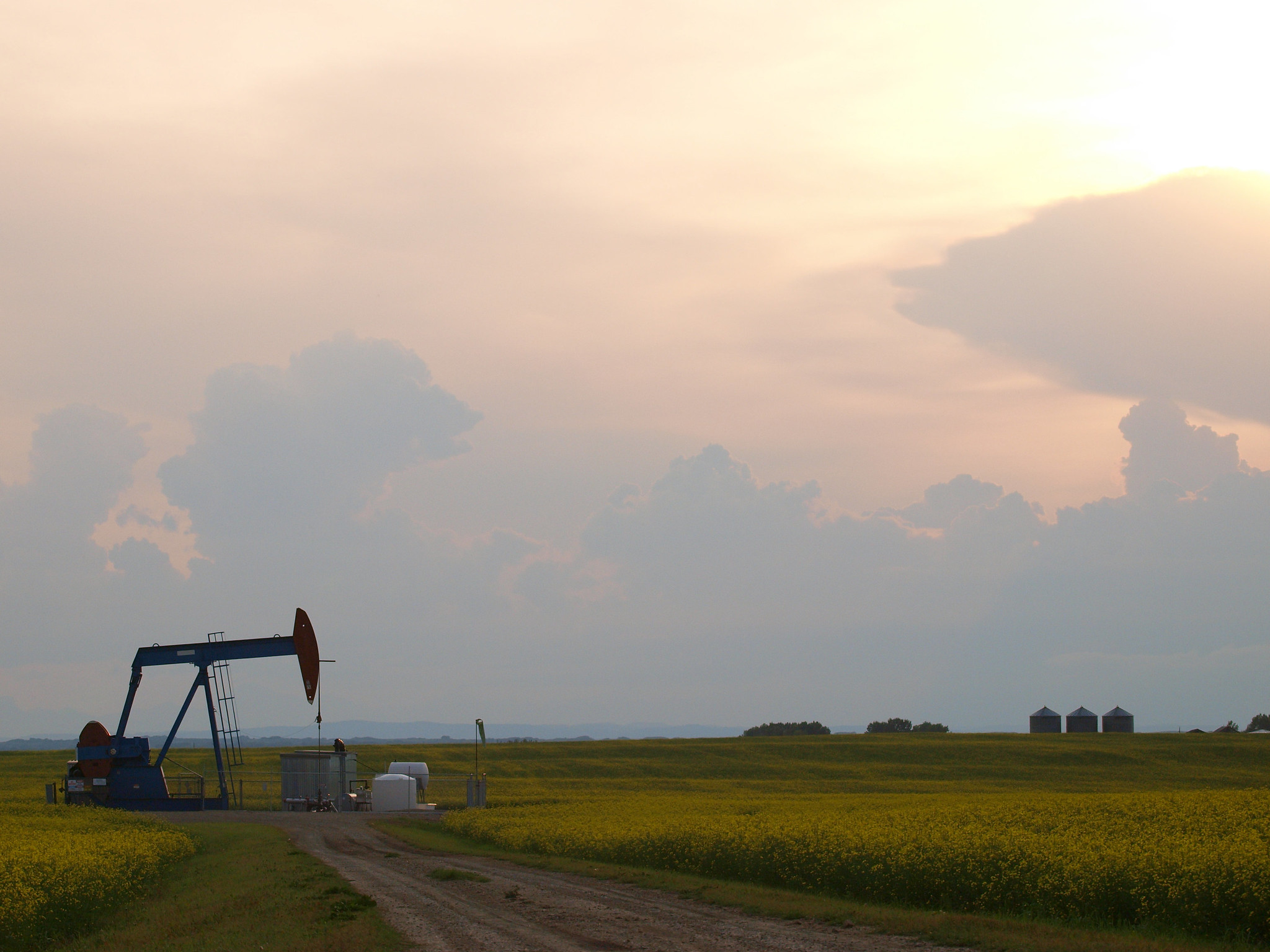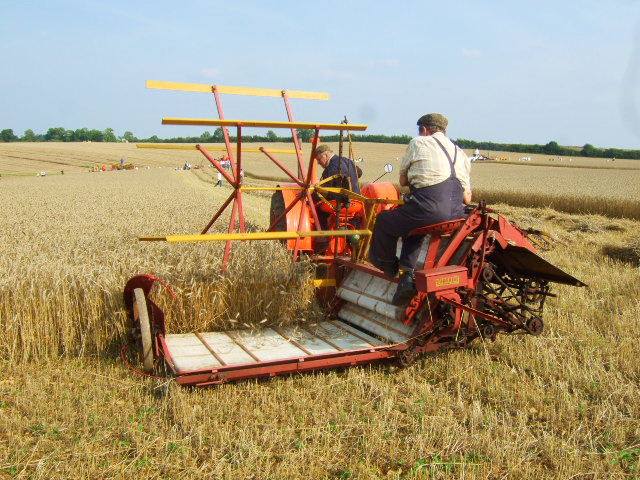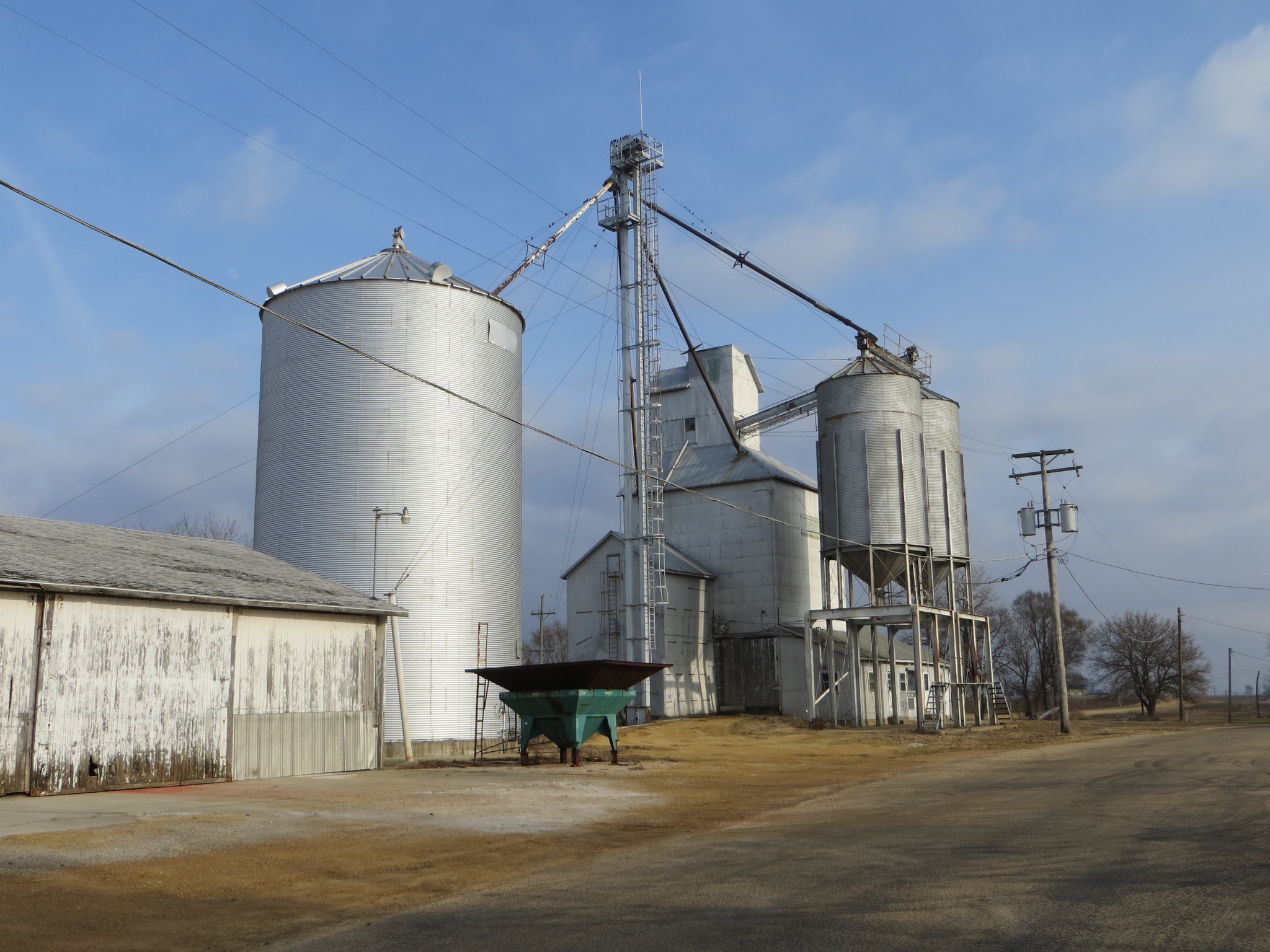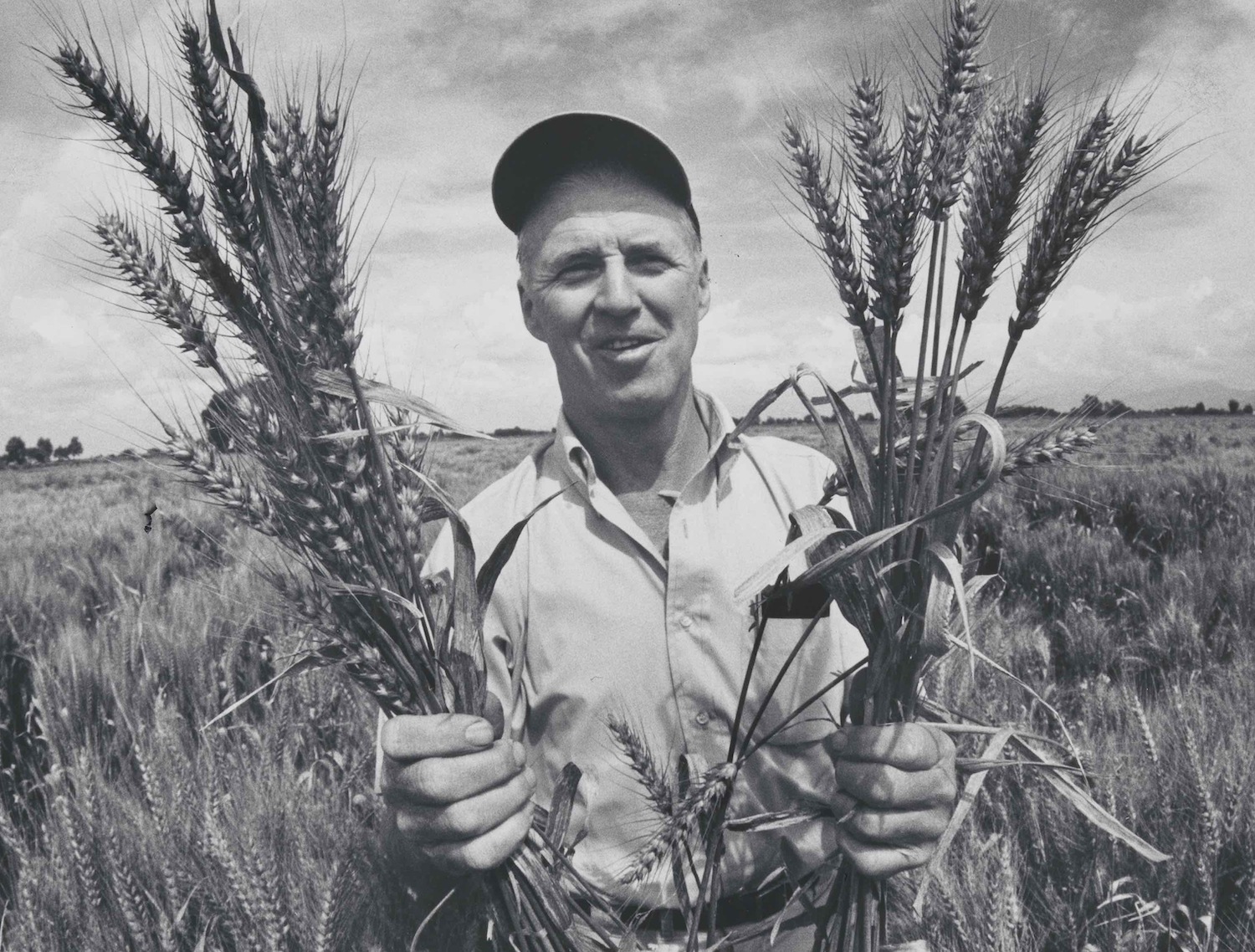
Courtesy of National Portrait Gallery, Smithsonian Institution. Photo by Arthur Rickerby
A new documentary, released tonight on PBS, looks back on the legendary plant scientist’s personal history—and reckons with his complicated legacy.
Shortly after Sonny Perdue, the current Secretary of Agriculture, was sworn into office, he took the witness stand at a Congressional subcommittee to share his vision for America’s rural economy. A central goal? Making sure that farmers fulfilled their moral obligation to “feed the world.”
Above: Norman Borlaug as photographed in 1970. He’s standing in a Mexican wheat field, holding bunches of the so-called “miracle” wheat that he developed by crossing a native Mexican strain with a Japanese dwarf variety.
Over the next thirty years, the global population would swell—and billions of new people would need more food than had been produced in the last 8,000 years, he claimed. Fortunately, America was up to the task, “blessed” with the ability to produce more than it could consume.
Perdue didn’t invent this rhetoric. For decades, politicians, food company executives, agricultural producers, and others have cited this humanitarian mandate to justify the pursuit of ever-larger yields—arguing that new technologies and methods must be adopted, or the world will go hungry. But that frame is rooted in political myth-making, and has often been more about extending American influence abroad than improving global food security.
“The Man Who Tried to Feed the World,” a new documentary film that premieres tonight on PBS, traces the “feed the world” ideology back to its Cold War origins—and specifically to a high-yield dwarf wheat developed by Norman Borlaug, the scientist widely credited with laying the foundation for the way the world farms today.
In the 1960s and ‘70s, Borlaug rose from unknown plant pathologist to American legend for sparking a period of enormous agricultural output known as the Green Revolution. He was hailed as a hero, credited with ending famines in the developing world at a time when fears of an escalating population were weaponized as a potent political issue.
For that effort, he was awarded the Nobel Peace Prize in 1970. But as historians and agronomists explain in the film, Borlaug’s advancements—including higher-yield varieties, heavy use of synthetic fertilizers, and widespread adoption of irrigation—are now viewed in a more ambivalent light, due to mounting environmental costs and worsening social impacts on rural communities and agrarian societies.
“It seemed incredibly relevant today, to look at the impact that an individual can have, for better and for worse.”
“The promise and peril of taking scientific approaches to solving real world problems is so clear in his story,” said Rob Rapley, the film’s director. “It seemed incredibly relevant today, to look at the impact that an individual can have, for better and for worse.”
Making extensive use of archival photos and footage, the film tells the story of a farmer’s son enraptured by technology. Born in Iowa in 1914, Borlaug toiled on his family’s hundred-acre corn farm until the tractor liberated him from manual labor and allowed him to pursue a degree in plant biology at the University of Minnesota.
During the throes of the Great Depression, Borlaug witnessed the social unrest wrought by economic collapse and hunger. Dairy farmers dumped their product during “milk strikes,” desperate to raise prices, even as people went hungry. (The irony parallels our current moment, as Americans queue in bread lines and overwhelm food banks while farmers dump huge amounts of milk and vegetables.) A bloody fight on the streets of Minneapolis convinced Borlaug that hunger leads to violence, and that peace could not be achieved without abundant food.
In the 1940s, Borlaug worked on a farm research station in Chapingo, outside Mexico City, as part of a Rockefeller Foundation effort to raise the standard of living for impoverished rural farmers. His job was to breed wheat—not yet a staple of the Mexican diet—that was resistant to stem rust, a form of crop failure caused by a parasitic fungus.
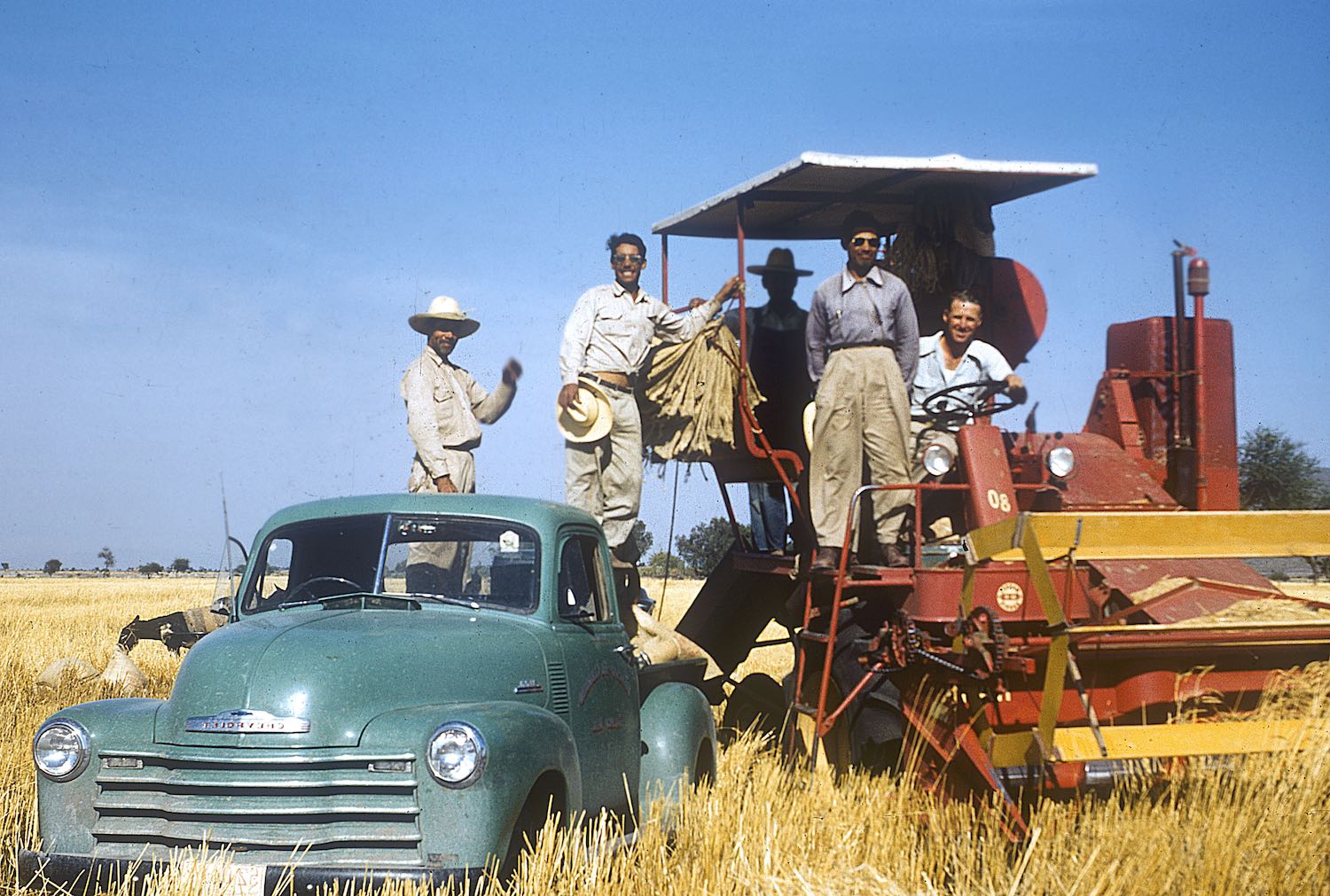
Norman Borlaug (behind steering wheel) pictured with Mexican field technicians who contributed to early seed production of improved wheat varieties, near Ciudad Obregón, Sonora, northern Mexico, 1952
International Maize and Wheat Improvement Center
After years of struggle and frustration, he successfully bred a wheat variety that delivered huge quantities of high-quality grain and could increase yields ten-fold. But only Mexico’s well-heeled farmers, who grew for exports, not subsistence, could afford it, because the crop relied on unprecedented applications of chemical fertilizer and access to irrigation. A vast amount of food would be grown and distributed by a select few, while poorer, small-scale farmers were destined to become surplus labor. Many abandoned agriculture forever, leaving the countryside for cities.
Borlaug found a way to feed the hungry, in theory. But the film suggests his blinkered focus on improving yields, without fully considering the social consequences of new techniques, was a dereliction of the Rockefeller Foundation’s mission. It was, however, well-timed. During the Cold War, Borlaug’s methods became appealing to American policymakers, who thought they could stop the spread of Communism by feeding Asian peasants.
“It was a rather simple idea,” historian Tore Olsson says in the film. “No one becomes a Communist on a full belly.”
There are more than 800 million hungry people around the world, a number that is on the rise, according to the United Nations.
In 1963, the Rockefeller Foundation and the Mexican government sent Borlaug to India, to hasten the adoption a high-yield dwarf wheat hybrid. It required massive investments and systems that were unfamiliar to Indian subsistence farmers. Prakash Kumar, a Penn State historian, also suggests that there was a cultural clash, with “the brute capitalism” of Borlaug’s model being “irreconcilable with Gandhian thought,” which preaches restraint and self-sufficiency.
No matter. The U.S. had been sending wheat to India as part of Food for Peace, but the country’s growing population, and corresponding demand for food, had become an urgent political concern. During Senate hearings on a global “population crisis,” experts testified that famine and chaos were inevitable if people could not feed themselves. And it wouldn’t be just in developing countries. “If there is no solution, all the world will live like India does now,” a Harvard population expert testified to Congress.
Then, as now, the fear was that there wasn’t enough arable land left to expand farming. The only way to avert famine, it seemed, was to make those acres already in use more productive. In 1966, the U.S. cut off food aid to India, forcing agriculture ministers in New Delhi to acquiesce to Borlaug’s program of imported fertilizer, thousands of miles of irrigation, and guaranteed minimum prices.
This intervention became the basis of a massive success story. Two years later, Borlaug toured an Indian countryside blanketed in grain. An American diplomat named the bounty, which would feed millions, the Green Revolution.
Borlaug’s influence only grew with time, cementing his place as the patron saint of American agriculture.
Soon after, other developing nations—including Afghanistan, Pakistan, Turkey, and Morocco—got on board, enjoying record-breaking harvests of Borlaug’s dwarf wheat, along with other high-yield rice and corn. Borlaug’s influence only grew with time, cementing his place as the patron saint of American agriculture. “More than any other single person of this age, he has helped provide bread for a hungry world,” the Nobel committee said in 1970, when it presented him with the Peace Prize.
“He was hailed as a messianic figure,” Rapley says. “It’s as if someone solved global warming in the space of twelve months. That’s how people felt about him.”
But no matter how much food has been created with Green Revolution technologies, Borlaug’s initial calling—to feed the hungry people of the world—remains unfulfilled. There are more than 800 million hungry people around the world, a number that is on the rise, according to the United Nations.
“Modern famines are rarely, if ever, an absolute crisis of food supply,” David Rieff writes in The Nation. They’re a function of the poor’s ability to access it. In other words, famines don’t start on farms. They begin with politics, and are rooted in conflict and inequality. “The Man Who Tried to Feed the World” reminds us that hunger is a multi-dimensional social problem—and won’t be solved with a technological silver bullet.

